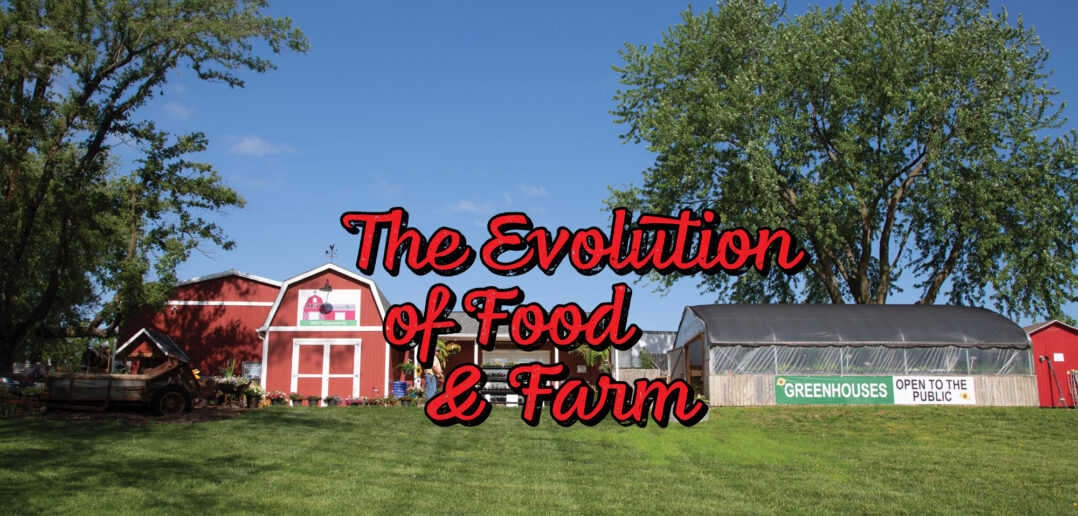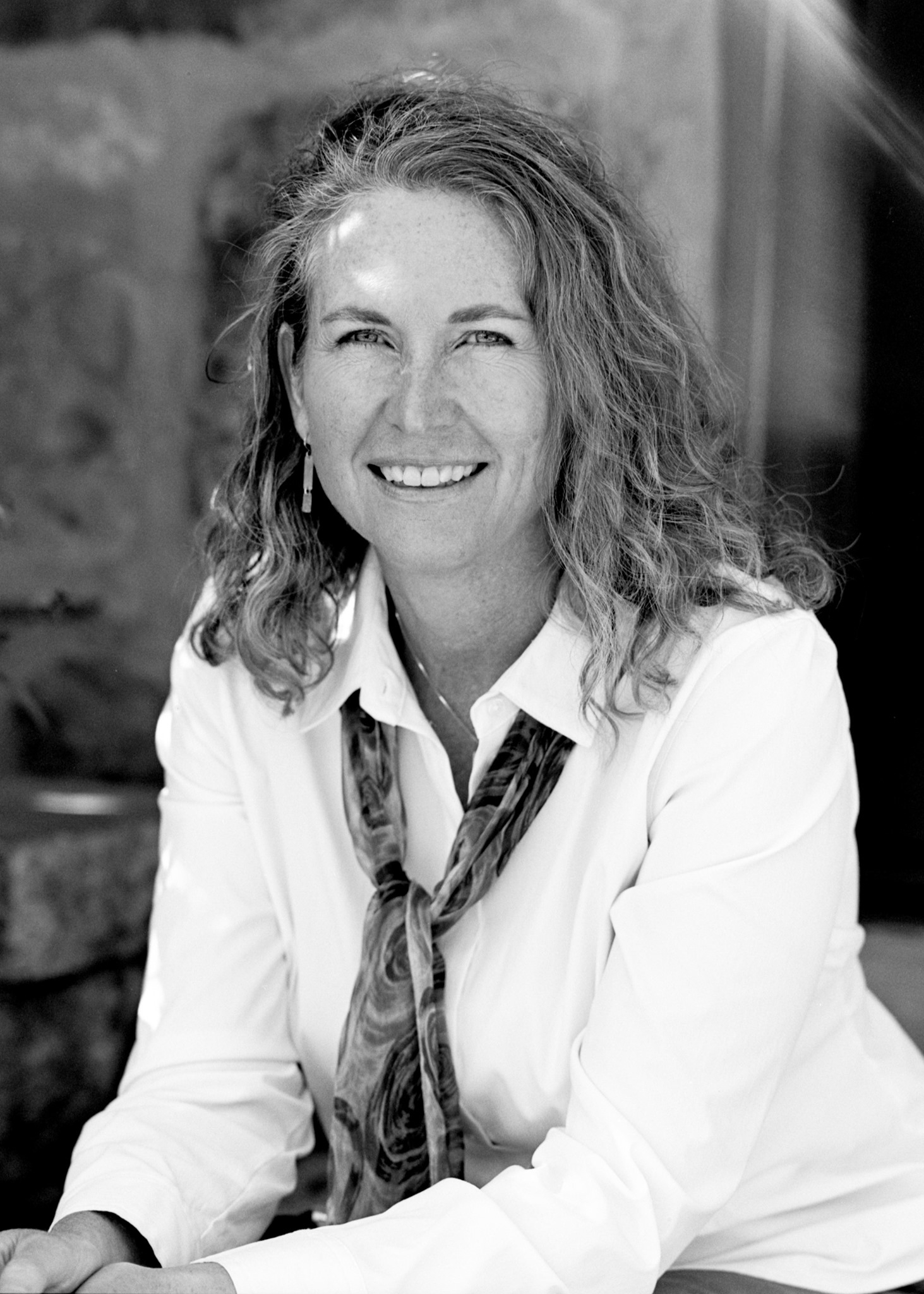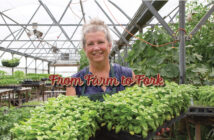| story by | |
| photo by | Steven Hertzog |
| OPEN A PDF OF THE ARTICLE |
The number of vendors and shoppers frequenting the Lawrence Farmers’ Market has grown significantly over the years, and so has the diversity of products offered.

The JET Farm and Country Store
Farmers markets don’t feel trendy, at least in the way that word applies to fashion or the latest must-stream series. But they are the ideal venue for observing shifts in food and agriculture, especially in Lawrence, which is home to one of the state’s oldest.
The Lawrence Farmers’ Market has for decades been a magnet for shoppers, who today can, depending on the season, just as easily buy pecans, Asian pears, mushrooms, fresh ginger, celery and wine as tomatoes, zucchini and corn. Those who enjoy snacking while shopping can pick up classics like cinnamon rolls and honey sticks, or indulge in more contemporary cravings for kombucha, Greek hand pies, French macarons, cold-pressed juice and sourdough doughnuts.
That’s a far cry from 1976, when early vendors gathered near Eighth and Vermont streets to sell their harvest. Karen Pendleton says when she and her husband, John, owners of Pendleton’s Country Market, joined in 1982, “there were no rules. I don’t remember if we paid to be part of the market, but there wasn’t any structure to it.
“For the longest time, if we had 10 vendors, we had 10 vendors selling tomatoes,” she says.
From Few to 65
Today, there are 65-plus vendors. Many converge on two parking lots on New Hampshire Street, between Ninth and 10th streets, on Saturday mornings 32 weeks a year. The Tuesday night market is in South Park, and there’s an outdoor Holiday Market in December. Longevity has proven a boon for the local economy, in part because farmers markets keep dollars circulating at home.
Seventy cents of every dollar spent at a farmers market stays in the community compared to just 40 cents per dollar spent at big box stores, according to the Kansas Department of Agriculture’s From the Land of Kansas trademark program. Farmers markets also spur spending at nearby businesses—as much as $1.36 for every dollar spent at the market, the Farmers Market Coalition says—and encourage entrepreneurial activity by serving as an incubator for fledgling businesses and helping established ones expand.
That’s been the case in Lawrence, where vendors are increasingly adding more categories to their stalls, says Emily Lysen, the Lawrence Farmers’ Market director of development.
“More people are doing multiple categories,” she says. “They’re not just a produce farmer or meat producer anymore. They also make soap or other things.”
Take JET Produce & Meats, owned by Jacob and Jennifer Thomas. The couple began selling vegetables including broccoli, tomatoes and squash at the Leavenworth Farmers’ Market in 2012. They became a Tuesday vendor at the Lawrence Farmers’ Market in 2015, added Saturday in 2016 and expanded to the Lenexa Farmers’ Market in 2018.
Experiments in greenhouse growing prompted them to build one of their own to start seeds. There was extra space, so they added bedding plants and flowers, then houseplants.
“It just kind of snowballed,” Jacob Thomas says.
JET now has three heated greenhouses plus five high tunnels. Also called hoop houses, these plastic-covered and unheated structures allow for more even watering and protect plants from storm damage, pests and early or late frosts. That, in turn, means better quality—tomatoes have fewer cracks and splits, greens aren’t shredded by the wind or bugs—and a longer harvest window.
“We planted things like broccoli and lettuce on Feb. 1,” Jennifer Thomas says. “All the vegetables on my table except the green onions were coming out of the high tunnels” through early May.
At the same time, customers began asking about meat. So JET started producing its own beef and pork, then added eggs, chicken and lamb. They opened an on-farm store in 2018 to accommodate customers who wanted to shop mid-week or during the winter, upgraded their website and added products like their own popcorn and cornbread mix, as well as jams and jellies, honey, salsa, cheese and milk from area farms.
It’s a lot to manage, and Jacob and Jennifer credit family members with helping run their market stalls and the store. JET also has five full-time and three part-time employees. During the summer, it employs six to eight high school students to help with harvesting. And then there are the customers.
“It was really humbling to me (in April) when we had a customer-appreciation event,” Jacob Thomas says. “We had food for 300 people, and more than 300 people came out. That’s how many people care about us.”
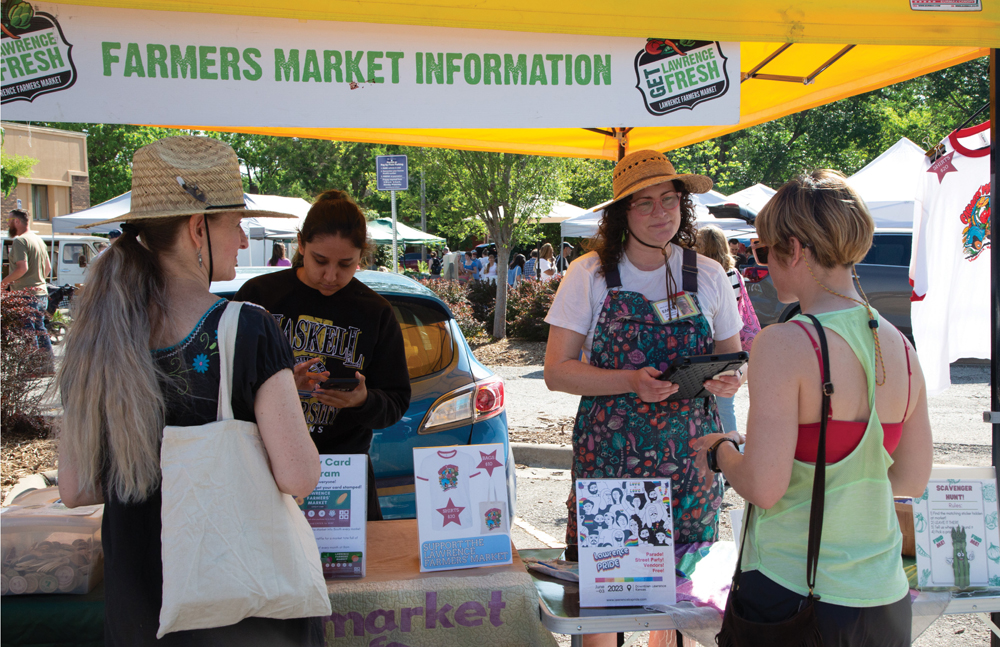
Anna Skenadore and Emily Lysen helping customers at the LFM information booth
A Cooperative Community
People also care about the Lawrence Farmers’ Market, which is a producer-only market where everything that’s sold must be grown or made by vendors living within 50 miles of Lawrence. It’s an independent 501(c)3 nonprofit, making it unique among markets of similar size in neighboring cities which are frequently underwritten and managed by municipal departments.
The market’s board of directors is comprised mostly of vendors (although it does include some community members), and vendors serve on committees and attend fall and spring meetings. Many are also integral to the Douglas County Food Policy Council, Growing Lawrence, the Kansas Specialty Crop Growers Association and other organizations.
LOCAL MATTERS
Our Local Advertisers – Making a Positive Impact
That adds up to a spirit of cooperation that extends beyond market hours, many say. Teresa Flory, of Flory Family Farms, credits the Pendletons for encouraging her and her husband, Roger Flory, to join the Lawrence Farmers’ Market in 2013. Jacob Thomas appreciated their advice when JET began growing flowers—something the Pendletons have long done. When strong winds ripped plastic off several of JET’s high tunnels, Jacob Thomas says John Pendleton arrived the next day with equipment and extra plastic to help.
The Pendletons themselves are grateful for the assistance they received when a microburst damaged much of their farm in 2006 and again in 2019, when a tornado swept through. That time, Juniper Hill Farms brought a refrigerated truck to store the Pendleton’s rescued peonies, JET contributed vegetables to help them meet CSA (Community Supported Agriculture) obligations and countless more farmers, friends and customers pitched in to clean up. (For more shout-outs, listen to recent episodes about the tornado on the Pendletons’ podcast, The Stalk of the Town.)
All that is obviously good for folks who need help, but such supportive relationships also build a stronger market, vendors say.
“A lot of people think vendors are in competition against each other,” Jacob Thomas says. “But for the most part, all the vendors get along.”
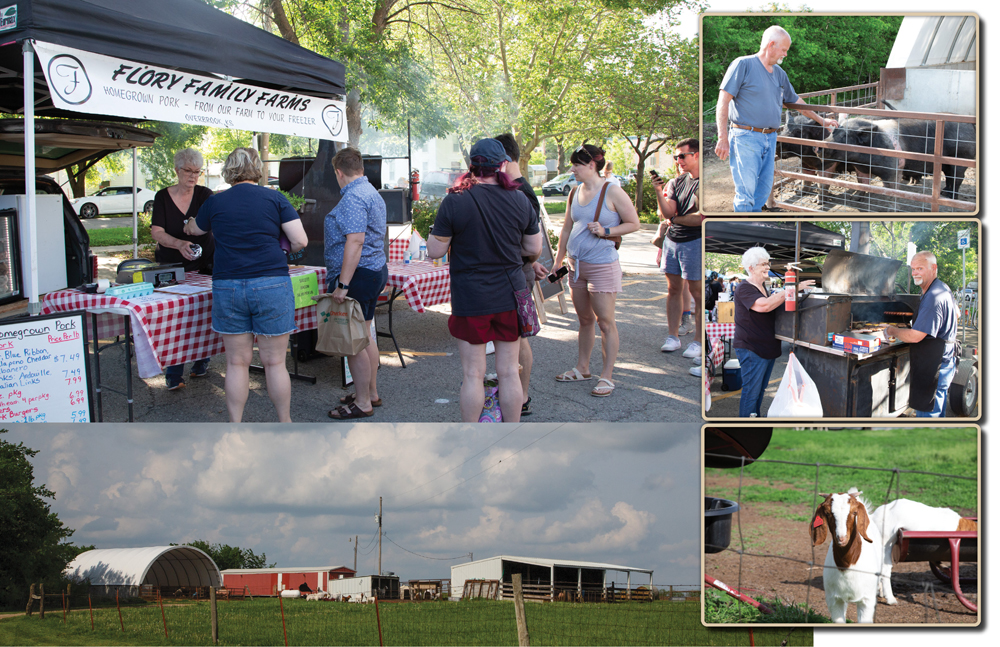
Teresa and Roger Flory at the LFM and home on their farm. Bottom The Flory Farm
Rebuilding Post-COVID
Still, the past few years have proved challenging. COVID shut the market down for a time; it reopened with a preorder and pickup system, and then with restricted in-person shopping. By the time the Lawrence Farmers’ Market fully reopened in 2021, both customer and vendor numbers had dropped.
“COVID really did a number on farmers markets,” says Karen Pendleton, who sells cut flowers and plants at farmers markets and an on-farm store, offers pick-your-own asparagus, runs a CSA and does wedding and event flowers. “People are coming back to the market now. A full market is a fun market.”
The market has added 31 new vendors since 2021 and continues to recruit more. Lysen credits the market’s vendor outreach committee with developing initiatives including the “visiting vendor program,” which allows potential vendors to experience the market before committing. The market has also added a vendor handbook to explain details such as stall assignments, setup and tear-down procedures and tokens.
The last can be confusing, because shoppers use three types of wooden tokens. The $5 ones are purchased with a credit or debit card, and are the same as cash; $1 tokens can be purchased using an EBT card by Supplemental Nutrition Assistance Program (SNAP) participants; and SNAP users can get purple tokens for Double Up Food Bucks Heartland, a regional program that matches every $1 spent on fresh fruits and vegetables, up to $25 a day. Some vendors also participate in the Kansas Senior Farmers Market Nutrition Program, which helps low-income seniors purchase fresh fruits and vegetables, herbs and honey.
The market also strives to lower barriers to entry by helping vendors acquire food liability insurance and developing a vendor fee sponsorship program for applicants who are Black, Indigenous or people of color. In addition, the market recently completed a demographic survey to better understand its shoppers and vendors, and determine how to recruit more of both.
“Customers want to see themselves represented at the market, and to do that, we have to find vendors who represent new customer bases,” Lysen says.
Certainly, there’s room to grow. Only about 2 percent of Lawrence’s residents and 1.5 percent of the county’s shop at farmers markets, according to a 2016 study by SCALE that evaluated the Lawrence Farmers’ Market, Farmers Market at Clinton Parkway Nursery, Cottin’s Hardware Farmers Markets and those in Perry-Lecompton and Eudora.
“If we could double that, it would be huge,” Jennifer Thomas says.
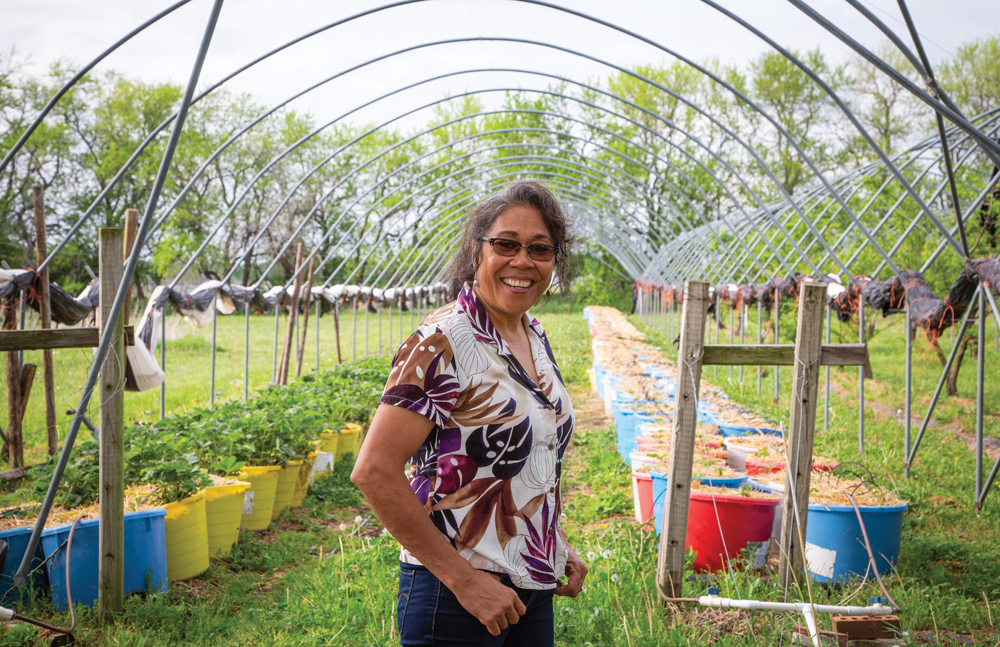
Lile Merrill of Trails West Farms
Budgeting for Growth
The Lawrence Farmers’ Market has a 2023 budget of $92,500, which is partly financed by membership, advertising and stall fees. Expenses include advertising and marketing, market maintenance, insurance, staff salaries and other business costs. Lysen this year became the market’s first-ever full-time employee; she oversees its marketing plan and programming, volunteers, community outreach, fundraising and grant-writing and management.
Market manager Anna Skenadore is in charge of on-site logistics on market days, serves as a liaison between vendors and the board, and assists with content creation and social media management. An assistant market manager helps during the busiest summer months.
The market also relies on grant support—Lysen is currently writing a proposal that would help bring initiatives like a market ambassador program to fruition—but is increasingly looking to donations for funding. The Douglas County Community Foundation added the Lawrence Farmers’ Market to its list of recipient funds, and the market received a significant gift from what Lysen calls an “angel donor.” She hopes more will follow.
“Grants only want to pay for new things,” Lysen says. “To maintain the quality of the Lawrence Farmers’ Market, we need community support through donations and sponsorships.”
The market also benefits from community partnerships. One of the most essential is with the City of Lawrence, which provides both locations free of charge. The city and market have long discussed the possibility of creating a permanent downtown Lawrence location with improved facilities, but a site meeting all the market’s needs has yet to be identified.
Kansas State University Research and Extension offers outreach through Master Gardeners of Douglas County (it helps with food-recovery efforts), Double Up Food Bucks Heartland and nutrition, SNAP education and other programming. LiveWell Douglas County, the Douglas County Food Policy Council, City Playcorps (which hosts pop-up playgrounds at the Tuesday market), local chefs and more are also active partners.
The market welcomes community booths, too. It regularly offers entertainment and special events (such as celebrating Pride month in June) and is continuing children’s programming, including the popular Scavenger Hunt.
“All the kid activities make families want to come,” Teresa Flory says. “It’s something fun to do on a Saturday morning.”
The Florys have been raising pigs since 1988, when one of their three sons wanted to show them in 4-H. Their sons are now grown, married and have off-farm jobs, but everyone—including their seven grandchildren—remains involved. Tim and Jana Flory raise Boer goats, while Brian and Julie Flory and Mark and Jessica Flory are partners in the family’s farrow-to-finish hog operation.
The Florys started selling pork at the Farmers Market at Clinton Parkway Nursery in May 2013 and joined the Lawrence Farmers’ Market later the same season. They offer staples like pork roasts and bacon, as well as specialty products including chorizo, ground sausage and mango-habanero brats. They used to supply meat to Roger’s cousin, Don Flory, who sold sausage biscuits and cooked Polish dogs at the farmers market. When Don stepped back from that in 2018, Roger and Teresa bought his grill and added sandwiches to their own offerings.
“When it’s barbecue season, the meat does really well, the burgers and brats,” Roger Flory says. “When it’s cooler and people aren’t going to the lake, they come down for breakfast.”
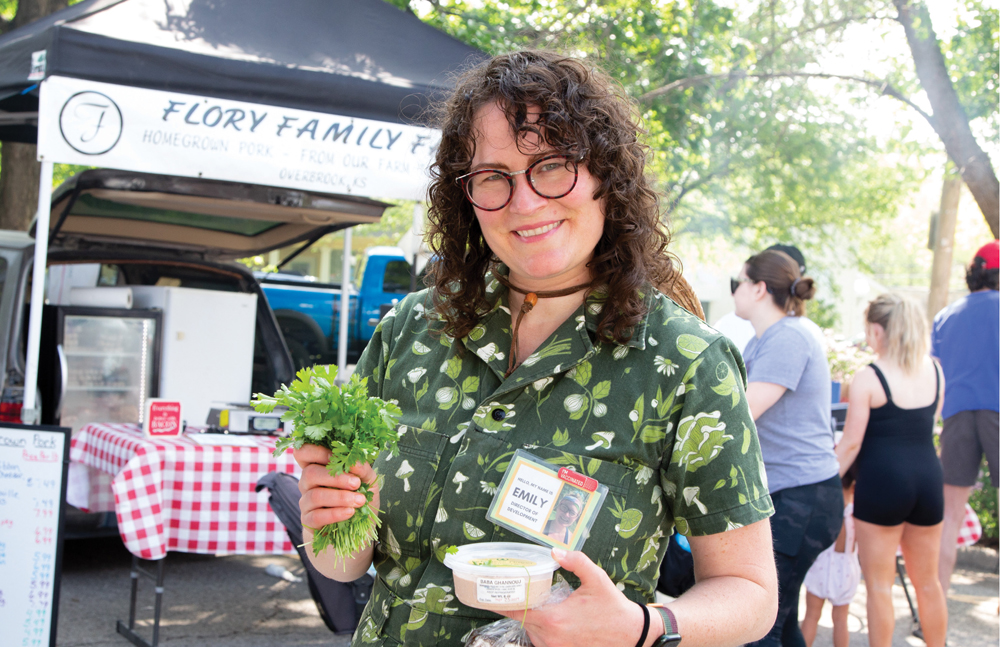
LFM Director of Development Emily Lysen
Battling Inflation
Still, each season brings its own uncertainty; this year it’s inflation. Like U.S. retail food costs, wholesale food costs soared last year. They leveled out in April but remain 26 percent higher than in February 2020, the National Restaurant Association says. That means prepared-foods vendors are likely still paying higher prices for ingredients such as butter and eggs.
The same is true for those selling produce and meat. Prices for essential supplies and shipping costs have risen, says Jacob Thomas, who notes egg cartons that were once 25 cents each were in April twice that. Roger Flory says hog feed has almost doubled in price, and meat processing, fuel prices, property tax and other farm expenses have also jumped in the past year.
“We have to go with the market on any given day,” he says. “If corn goes up, we pay more for it. If gas goes up, it costs more to drive our truck and trailer.”
Many Lawrence Farmers’ Market vendors have so far resisted charging more for their own products, opting instead to adjust elsewhere. Some advertise slightly smaller quantities at familiar price points. Others are counting on reductions in state sales tax to buffer shrinking profit margins.
Kansas in January reduced the amount of sales tax it charges on food and food ingredients by 2.5 percent. That means sales tax on fresh produce, meats and other unprocessed items sold in Lawrence dropped to 6.8 percent; the sales tax on heated and ready-to-eat products and prepared foods remains at 9.3 percent. Although some vendors, such as the Florys, calculate sales tax at the time of sale, others include it in each item’s advertised price. A slight drop in the tax rate simply offsets higher costs, allowing them to keep prices steady.
So far, customers have been supportive and understanding, says Lile Merrill, who owns Trails West Farm with her husband, Quill Merrill.
“I am not worried about it,” she says. “I think all the customers understand inflation.”
Lile, who is originally from Tonga, and Quill met in Hawaii and moved to Lawrence in 2006. They bought their farm near Eudora a year later and set about learning to manage the apple, pear, apricot, cherry, peach and other fruit species already growing there.
“I grew up in the South Pacific on a farm, but we had tropical fruits like coconuts, oranges, passionfruit, tangerines—things like that,” says Lile Merrill, who raises strawberries, 15 types of pears (including her favorite Asian pears), apples, Sand Hill plums (a native variety coveted for jam and jelly) and other fruit. “We had to have a crash course on how to take care of these.”
They’ve sold their harvest at the Lawrence Farmers’ Market since 2008; they’re also Overland Park Farmers’ Market vendors and supply fruit to USD 497. Still, it’s not easy. Take this spring—overnight temperatures in early May dropped into the 20s, damaging flowers and buds on early-blooming apricots and cherries, and curtailing fruit production. Such losses are just part of being a farmer, Lile Merrill says.
“We have these customers we love, and it’s one of the main reasons we keep coming” to the Lawrence Farmers’ Market, she continues. “We’ve met so many people who are so friendly. It easily makes our day worth it.”

